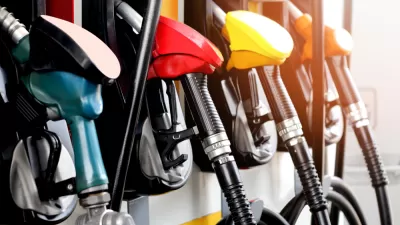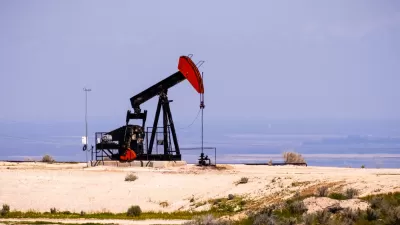The current U.S. record is 10 million barrels per day set in 1970. Last year averaged 9.2 million b/d. Experts believe that record will be reached this spring, if it hasn't already. Can Trump claim credit for the surging production?

President Trump falsely took credit for no consumer passenger jet fatalities in 2017, so undoubtedly he will claim credit for the predicted oil production record. However, it comes down to technology (e.g., use of hydraulic fracturing and horizontal drilling) and markets, not his numerous regulation rollbacks, which increase emissions and threaten health and safety (think Deepwater Horizon).
"[It] has nothing to do with who is in office," states Tom Kloza with Oil Price Information Service.
"Prices generally determine when oil companies drill, not presidents," writes (and states in audio version of article) Jeff Brady, energy correspondent for NPR. And "prices for crude oil are nearly double what they were two years ago." In fact, at $60 per barrel, they were at "the highest end-of-year price since 2013," according to the Energy Information Administration (EIA), a division of the U.S. Department of Energy.
EIA "forecasts total U.S. crude oil production to average 9.2 million b/d for all of 2017 and 10.0 million b/d in 2018, which would mark the highest annual average production, surpassing the previous record of 9.6 million b/d set in 1970," notes their Short Term Energy Outlook of Dec. 12, 2017.
Kloza predicts the new production record will be set this spring, writes Brady. "Others believe the U.S. might already produce 10 million barrels a day."
"We think that during December, that mark was actually reached," states Per Magnus Nysveen, an oil market analyst with the Norwegian firm Rystad Energy.
This disagreement will be settled when official federal production numbers are out at the end of February. After that, Nysveen predicts U.S. crude production will surpass Saudi Arabia and Russia.
Actually, U.S. shale oil producers (which use fracking) have those two nations to thank for the increase in oil prices due to their agreement in November to reduce production through the end of 2018, reports Matt Egan for CNN Money on Jan. 3.
"Production hit 9.58 million barrels per day in May 2015 before prices dropped because of an oil glut," reports Thomas Heath for The Washington Post on December 31, 2017. The oil glut resulted from a November 2014 decision by OPEC to retain market share, and thus not cut back on production as Saudi Arabia had traditionally done.
The booming U.S. oil production is shrinking oil imports, according to Rystad Energy's report, released December 29, 2017:
US oil imports are shrinking to new lows while oil exports are increasing. The petroleum trade deficit in the US [is] at merely 2.5 million barrels per day when looking at all types of petroleum liquids. This deficit has fallen steeply from a peak of 12.5 million barrels per day in 2007.
For those more concerned about reducing emissions than increasing oil production, NPR's Brady reports that "U.S. cars are more fuel-efficient, and overall demand is flat," which is good news for those driving gas and diesel-powered vehicles: "[It's] unlikely there will be any dramatic gas price increases in the near future," he adds.
FULL STORY: Drillers Are Optimistic As U.S. Oil Production Booms

Maui's Vacation Rental Debate Turns Ugly
Verbal attacks, misinformation campaigns and fistfights plague a high-stakes debate to convert thousands of vacation rentals into long-term housing.

Planetizen Federal Action Tracker
A weekly monitor of how Trump’s orders and actions are impacting planners and planning in America.

Chicago’s Ghost Rails
Just beneath the surface of the modern city lie the remnants of its expansive early 20th-century streetcar system.

Bend, Oregon Zoning Reforms Prioritize Small-Scale Housing
The city altered its zoning code to allow multi-family housing and eliminated parking mandates citywide.

Amtrak Cutting Jobs, Funding to High-Speed Rail
The agency plans to cut 10 percent of its workforce and has confirmed it will not fund new high-speed rail projects.

LA Denies Basic Services to Unhoused Residents
The city has repeatedly failed to respond to requests for trash pickup at encampment sites, and eliminated a program that provided mobile showers and toilets.
Urban Design for Planners 1: Software Tools
This six-course series explores essential urban design concepts using open source software and equips planners with the tools they need to participate fully in the urban design process.
Planning for Universal Design
Learn the tools for implementing Universal Design in planning regulations.
planning NEXT
Appalachian Highlands Housing Partners
Mpact (founded as Rail~Volution)
City of Camden Redevelopment Agency
City of Astoria
City of Portland
City of Laramie




























